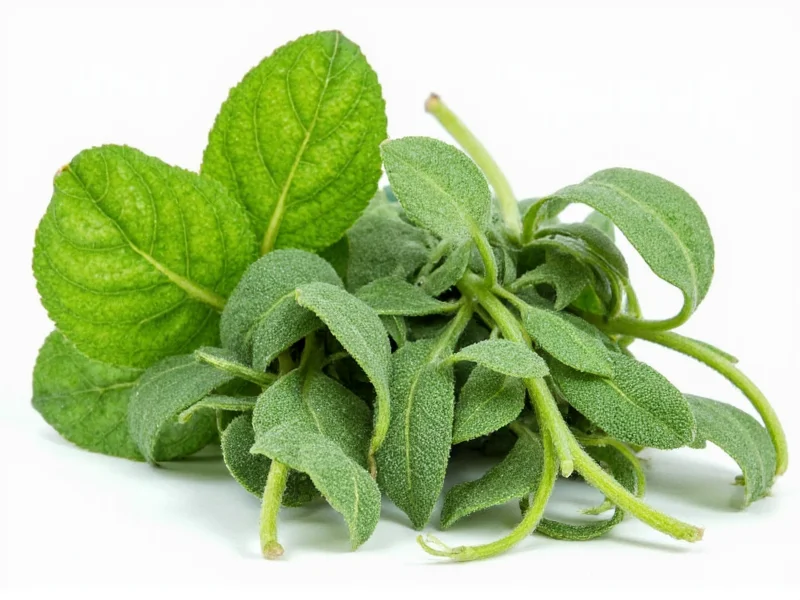When converting between fresh and dried sage, understanding the proper measurement ratio is essential for achieving balanced flavors in your cooking. The difference stems from the water content: fresh sage contains approximately 85% water, while dried sage has had most moisture removed, concentrating its flavor compounds. This concentration means you need less dried sage to achieve equivalent flavor intensity.
Why the 3:1 Fresh to Dried Sage Ratio Matters
The 3:1 conversion ratio isn't arbitrary—it's based on the physical properties of the herb. When sage dries, it loses water but retains most of its essential oils and flavor compounds. This concentration effect means dried sage delivers more potent flavor by volume. Using equal amounts would result in overpowering, bitter dishes.
Chefs and food scientists confirm that dried herbs generally have 2-3 times the flavor concentration of their fresh counterparts. For sage specifically, the 3:1 ratio provides the most consistent results across various cooking applications, from roasting meats to preparing holiday stuffings.
Practical Sage Substitution Guidelines
When substituting in recipes, consider these practical tips for optimal results:
- For every 1 tablespoon of fresh sage, use 1 teaspoon of dried sage
- Add dried sage earlier in the cooking process to allow time for rehydration and flavor release
- Fresh sage works best in finishing dishes or quick-cooking recipes where its delicate flavor won't dissipate
- When in doubt, start with slightly less dried sage and adjust to taste
| Measurement | Fresh Sage | Dried Sage |
|---|---|---|
| Teaspoon | 3 tsp | 1 tsp |
| Tablespoon | 1 tbsp | 1 tsp |
| Cup | 3/4 cup | 1/4 cup |
| Ounce | 0.75 oz | 0.25 oz |
Common Mistakes When Converting Sage Measurements
Many home cooks make critical errors when substituting fresh and dried sage:
- Equal substitution - Using the same volume of dried sage as fresh results in overpowering dishes
- Ignoring recipe timing - Adding dried sage too late in cooking prevents proper flavor development
- Not adjusting for herb quality - Older dried sage loses potency, requiring slight measurement adjustments
- Confusing measurement systems - Mixing volume and weight measurements creates inconsistency
How Sage Quality Affects Conversion Ratios
The exact conversion ratio can vary slightly based on sage quality. Fresh sage that's recently harvested contains maximum essential oils, while older fresh sage may have diminished potency. Similarly, dried sage stored improperly loses flavor over time.
For best results:
- Store dried sage in airtight containers away from light and heat
- Use dried sage within 6-12 months for optimal flavor
- Crush dried sage between your fingers before adding to release essential oils
- When using older dried sage, increase the amount by 25% to compensate for flavor loss
When to Choose Fresh vs. Dried Sage
Understanding when to use each form enhances your cooking:
Fresh sage works best for:
- Butter sauces and quick-cooking dishes
- Garnishing finished dishes
- Recipes where visual appeal matters
- Delicate dishes where subtle flavor is preferred
Dried sage shines in:
- Long-simmering dishes like stews and braises
- Dry rubs and seasoning blends
- Stuffings and casseroles
- When fresh sage isn't seasonally available
Scientific Basis for Herb Conversion Ratios
Food science research confirms the 3:1 ratio for sage. Studies measuring volatile oil content show dried sage contains approximately 2.8-3.2 times the concentration of thujone, cineole, and other flavor compounds compared to fresh sage. This scientific validation supports the culinary standard that's developed through generations of cooking experience.
The conversion ratio accounts for both water loss (approximately 85% in dried herbs) and the concentration of flavor compounds that don't evaporate during the drying process. This explains why simply accounting for water weight doesn't produce accurate flavor results.











 浙公网安备
33010002000092号
浙公网安备
33010002000092号 浙B2-20120091-4
浙B2-20120091-4